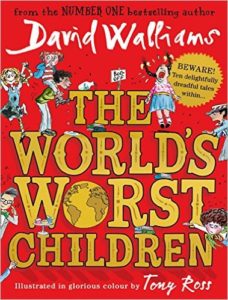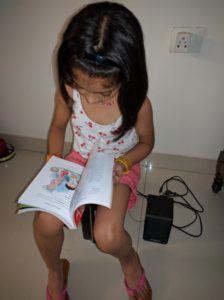The HarperCollins Book of English Poetry
Edited by Sudeep Sen
HarperCollins Publishers, India, 2012. Pb. Pp.540. Rs. 599.
Panchali’s Pledge Subramania Bharti
Translated by Usha Rajagopalan
Everyman Classics, Hachette India, 2012. Pb. Pp. 274 Rs. 350
Dom Moraes: Selected Poems
Edited with an introduction by Ranjit Hoskote. Penguin Books India, 2012, Pb. Pp.282. Rs 499.
The River Speaks: The Vaiyai Poems from the Paripatal
Translated by V. N. Muthukumar and Elizabeth Rani Segran
Penguin Classics, Penguin Books India, 2012. Pb. Pp. 176. Rs. 250
These my Words: The Penguin Book of Indian Poetry
Edited by Eunice de Souza and Melanie Silgardo
Penguin Books, India, 2012. Pb. Pp. 450 Rs. 499
In the company of a poet: Gulzar in conversation with Nasreen Munni Kabir
Rainlight, Rupa Publications, Delhi, 2012. Hb. Pp. 206. Rs 499
 2012 was a delicious year for poetry from and being published in India. There were plenty of books to choose from — anthologies, collections, translations and some even for children. The anthology edited by Eunice de Souza and Melanie Silgardo (p.xxi) “comprises almost thirty languages and dialects, all translated into the English except of course those poems written in English. It includes poems, folk songs, and oral narratives that have now been transcribed. We have sought for a collection which tries to represent the breadth and diversity of Indian poetry – we wanted poems that surprised and delighted, poems that illuminated, and inspired further reading—a book for readers, not scholars and academics. We chose poems that worked in translation, those which crossed the boundary of language, which faithfulness to the original combined with adaptation to produced work that existed on its own merit.” It gives a good bird’s-eye view of what was written over the centuries, the various traditions that spawned poems and the transformation to the form over time. While reading it, you get a sense of the variety of poetry, the forms, the reasons why poetry is written and what can actually travel in translation. It is extremely difficult for me to even give a snippet of what is in the anthology since every poem is perfect. It forces you to engage with the content, takes you to a different world and time, and yet encourages you to move on to read the next poem. In no way is it dull to read such a volume.
2012 was a delicious year for poetry from and being published in India. There were plenty of books to choose from — anthologies, collections, translations and some even for children. The anthology edited by Eunice de Souza and Melanie Silgardo (p.xxi) “comprises almost thirty languages and dialects, all translated into the English except of course those poems written in English. It includes poems, folk songs, and oral narratives that have now been transcribed. We have sought for a collection which tries to represent the breadth and diversity of Indian poetry – we wanted poems that surprised and delighted, poems that illuminated, and inspired further reading—a book for readers, not scholars and academics. We chose poems that worked in translation, those which crossed the boundary of language, which faithfulness to the original combined with adaptation to produced work that existed on its own merit.” It gives a good bird’s-eye view of what was written over the centuries, the various traditions that spawned poems and the transformation to the form over time. While reading it, you get a sense of the variety of poetry, the forms, the reasons why poetry is written and what can actually travel in translation. It is extremely difficult for me to even give a snippet of what is in the anthology since every poem is perfect. It forces you to engage with the content, takes you to a different world and time, and yet encourages you to move on to read the next poem. In no way is it dull to read such a volume.
In fact the editors achieve very well what Gulzar says in the absolutely delicious book In the company of a poet: Gulzar in conversation with Nasreen Munni Kabir that poetry is about “direct communication” and “What a poem says on the surface is not all that it means. You have to unpick the lines and see the shadows of words. That what makes it poetry, otherwise it would be prose. You usually have to be less ambiguous in prose, which is often an elaboration of thoughts: whereas in poetry, thoughts are usually compressed. A poem has an element of mystery. You have to unravel that mystery. Of course it depends on every poet—how much they reveal, and how much they choose not to.” He adds, “when you understand a poem’s meaning, you can never forget it. You find yourself reciting it at some occasion and it is appreciated. The idea of writing poetry appealed to me because reciting poetry is so pleasurable and the appreciation I got made me happy.”
I wish though that Eunice de Souza and Melanie Silgardo had a longer note about the translation process. Or at least got a few of the translators to speak and then carry a transcript of it as an afterword on their experience at translating poetry. Obviously it takes a while for a satisfactory conclusion to be achieved. An insight into this is given by Sudeep Sen in his Aria introduction on translating poetry “Sculpting language, altering tongues, intoning arias” (p.4), “In almost all instances — whether it be Hebrew, Danish, Korean, Macedonian, Polish, Persian, Spanish or Portuguese — I have worked closely with poets of the source languages themselves. They would do literal translations of the original poems in very raw prose. Once I got down the contents in an accurate version, I would then enter the process more proactively and often singularly to sculpt and revise the jagged prose texts to give them a poetic shape in English. After every revision and draft, I would ask the poet to read aloud the poems in their original tongue, so that I got down the rhythm, rhyme, and the cadence correctly — getting them as close to the original as is possible. Once both the poet in the original language and I as a translator were happy with the versions we came up with — which happened through several working sessions over extended periods of time — we would let go of the poems in their new avatar, in a new language.” Maybe knowing this he chose to consciously create a useful anthology of English poetry by Indians (based in the country and from the diaspora). It was fifteen years in the making, but it is time well spent. Unfortunately that is not the case with Usha Rajagoplan’s translations of Subramania Bharti’s Panchali’s Pledge. I cannot read the poems in the source language but I realize that the translations are missing something from the original. 
Of the recent set of publications on poetry my favourites are the translations of Lal Ded’s poetry by Ranjit Hoskote (I, Lalla) and his selection of Dom Moraes poems. Even if you have never read poetry or been hesitant about taking a dip in it, start with Ranjit Hoskote’s introductions. His selection, translations and arrangement of the poems introduces you to the poets, their techiniques, form and evolution very well.
 And if you have children. Then some of the anthologies that I absolutely enjoy reading out aloud to my daughter are The Rattle Bag edited by Seamus Heaney and Ted Hughes; The Puffin Book of Nonsense Verse selected and illustrated by Quentin Blake; The Puffin Book of Modern Children’s Verse edited by Brian Patten, illustrated by Michael Foreman (revised and updated); The Macmillan Treasury of Poetry for Children with a foreword by Charles Causley
And if you have children. Then some of the anthologies that I absolutely enjoy reading out aloud to my daughter are The Rattle Bag edited by Seamus Heaney and Ted Hughes; The Puffin Book of Nonsense Verse selected and illustrated by Quentin Blake; The Puffin Book of Modern Children’s Verse edited by Brian Patten, illustrated by Michael Foreman (revised and updated); The Macmillan Treasury of Poetry for Children with a foreword by Charles Causley  and A first poetry book selected by Pie Corbett and Gaby Morgan (published by Macmillan). As Charles Causley who used to be a school teacher till one day he discovered the joys of reading poetry to his students says, “A poet, of course, is not obliged to make a poem, whatever its form, entirely accessible at a first reading. A poem, by its nature, may hold certain qualities in reserve. It may not burn itself out, so to speak, in one brilliant flash of light. A poem is a living organism, capable of continuous development and the most subtle of changes. It may contain both a revelation and a mystery. We need to be aware not only of what is said, but of what the poet most carefully has left unsaid.” Pie Corbett says it aptly “Let the poems become shafts of sunlight to brighten up the day.”
and A first poetry book selected by Pie Corbett and Gaby Morgan (published by Macmillan). As Charles Causley who used to be a school teacher till one day he discovered the joys of reading poetry to his students says, “A poet, of course, is not obliged to make a poem, whatever its form, entirely accessible at a first reading. A poem, by its nature, may hold certain qualities in reserve. It may not burn itself out, so to speak, in one brilliant flash of light. A poem is a living organism, capable of continuous development and the most subtle of changes. It may contain both a revelation and a mystery. We need to be aware not only of what is said, but of what the poet most carefully has left unsaid.” Pie Corbett says it aptly “Let the poems become shafts of sunlight to brighten up the day.” 
 This awful book, and it is awful, especially the spelling, will have a very bad influence on young minds. It will give children lots and lots of ideas about how to be even naughtier than they already are, and some of them are already EXTREMELY naughty. It is an outrage and I for one will be calling this book to be banned. Mr Wallybottom ( or whatever his stupid made-up name is) should be ashamed of himself.
This awful book, and it is awful, especially the spelling, will have a very bad influence on young minds. It will give children lots and lots of ideas about how to be even naughtier than they already are, and some of them are already EXTREMELY naughty. It is an outrage and I for one will be calling this book to be banned. Mr Wallybottom ( or whatever his stupid made-up name is) should be ashamed of himself.  a bit shot of a tiny ( and her first book review) to her grandmother via WhatsApp. Here it is:
a bit shot of a tiny ( and her first book review) to her grandmother via WhatsApp. Here it is:









